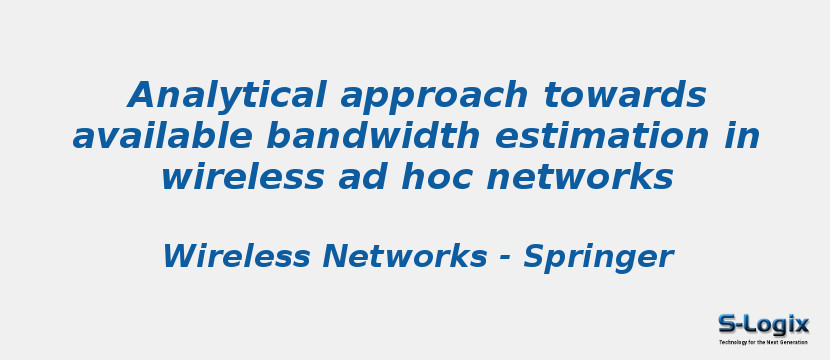Research Area: Mobile Ad Hoc Networks
Since 1999 IEEE 802.11 has become a dominating wireless technology for providing WLAN in both public and private places. The protocol has evolved with time and the current version of protocol allows the maximum data rate up to 6.76 Gbps. Providing high data rate makes it capable of supporting applications demanding high bandwidth and less delay. The protocol is built on carrier sense multiple access with collision avoidance (CSMA/CA) principle to minimize the collisions. In real-time networks as the traffic increases, collisions take place between different flows leading to delay and wastage of bandwidth. In literature, various works are dedicated to predicting the collision probability to estimate available bandwidth of the network. One of the popular approaches ABE (Sarr et al. in IEEE Trans Mob Comput 7(10):1228–1241, 2008) focused on this issue and calculates collision probability of Hello Packets and interpolating it to get the collision probability of data packets to estimate the available bandwidth. The current work proposes to use an analytical approach to predict the collision probability without any intrusiveness and estimate the available bandwidth for accurate admission control. Most of the literature that uses mathematical approach assumed homogeneous conditions. The current paper takes into consideration heterogeneous conditions to resemble real networks. The paper proposes amalgamation of passive approach and analytical approach, yielding more accurate results. The work is verified through extensive simulations to validate our proposed model. Since the model is based on analytical approach, major benefits are: (a) there is no need to send packets for estimating the collisions, hence scaling down the overheads; (b) One can change the parameters and predict the result set for any given conditions; (c) the method is cost-effective and non-intrusive in nature.
Keywords:
Author(s) Name: Mukta & Neeraj Gupta
Journal name: Wireless Networks
Conferrence name:
Publisher name: Springer
DOI: 10.1007/s11276-020-02249-8
Volume Information: volume 26, pages 2957–2982 (2020)
